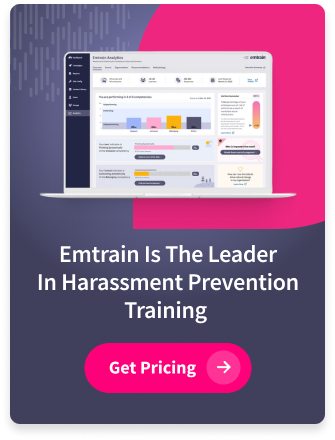Unconscious bias in the workplace is a significant issue because it can lead to unfair treatment, limit opportunities for certain groups, and create a non-inclusive work environment. These biases, which are subtle and often unintentional, can affect hiring decisions, performance evaluations, and promotions, thereby perpetuating inequality and reducing diversity. This not only undermines the principles of fairness and meritocracy but also negatively impacts the overall productivity and innovation of an organization. When employees feel undervalued or discriminated against, it can lead to decreased job satisfaction, higher turnover rates, and a toxic workplace culture. Thus, understanding unconscious bias and how to mitigate it is important.

Common Types of Unconscious Bias
There exists many unconscious biases in the workplace, but here are a few examples:
Affinity Bias
Favoring those who share similar interests, backgrounds, or experiences. This can lead to preferential treatment in hiring, promotions, and project assignments.
Confirmation Bias
Seeking out information or interpreting situations in a way that confirms pre-existing beliefs. This can affect performance evaluations and decision-making.
Halo Effect
Allowing one positive trait to influence the overall perception of a person. For example, assuming someone who is confident is also competent.
Horns Effect
The opposite of the halo effect, where one negative trait clouds the overall judgment of a person’s abilities.
Attribution Bias
Attributing one’s successes to their own abilities and efforts while blaming failures on external factors, and conversely, attributing others’ successes to luck and failures to their abilities.
The Impact of Unconscious Bias in the Workplace
Unconscious bias can have far-reaching effects on various aspects of the workplace:
Recruitment and Hiring
Biases can influence who gets hired, often resulting in a less diverse workforce. For example, affinity bias might lead hiring managers to select candidates who are similar to themselves, thereby limiting diversity.
Performance Evaluations
Biased evaluations can lead to unfair appraisals, affecting promotions, pay raises, and career development opportunities. This can demotivate employees and affect their performance.
Team Dynamics
Biases can affect how team members interact and collaborate, leading to a lack of inclusivity and innovation. For instance, certain voices may be heard more than others, stifling diverse perspectives.
Employee Retention
When employees perceive bias in the workplace, it can lead to dissatisfaction, disengagement, and ultimately higher turnover rates.
Solutions for Mitigating Unconscious Bias
Understanding and addressing unconscious bias requires a proactive and multifaceted approach. Here are several strategies organizations can implement:
Awareness and Education
The first step in combating unconscious bias is awareness. Providing training sessions that educate employees about the existence and impact of unconscious bias is crucial. These sessions should include self-reflection exercises, implicit association tests, and discussions on real-world examples of bias.
Structured Recruitment Processes
To reduce bias in hiring, organizations can implement structured and standardized recruitment processes. This includes:
- Blind Recruitment: Removing personal information such as names, gender, and age from resumes to focus solely on qualifications and experience.
- Standardized Interviews: Using a set list of questions for all candidates to ensure consistency and fairness in the evaluation process.
Diverse Hiring Panels
Involving a diverse group of individuals in the hiring process can help mitigate individual biases and promote fairer decision-making.
Performance Evaluation Calibration
To address biases in performance evaluations, organizations can implement calibration sessions where managers discuss and review evaluations collectively to ensure consistency and fairness.
Inclusive Leadership Training
Training leaders to recognize and address their biases can have a significant impact. Inclusive leadership training should focus on developing empathy, active listening, and equitable decision-making skills.
Employee Resource Groups (ERGs)
Encouraging the formation of ERGs can provide support and advocacy for underrepresented groups. These groups can also offer valuable insights and recommendations for creating a more inclusive workplace.
Regular Monitoring and Feedback
Organizations should regularly monitor the effectiveness of their bias reduction initiatives and seek feedback from employees. This can be done through surveys, focus groups, and anonymous reporting mechanisms.
Promoting a Culture of Accountability
Creating a culture where everyone is accountable for recognizing and addressing bias is essential. This can be achieved through clear policies, regular training, and reinforcing the importance of diversity and inclusion in organizational values.
The Role of Technology in Addressing Unconscious Bias
Technology can also play a crucial role in mitigating unconscious bias. Artificial intelligence (AI) and machine learning tools can help identify and reduce bias in various HR processes. For example:
- AI-Powered Recruitment Tools: These tools can analyze job descriptions to ensure they are inclusive and identify biased language. They can also screen resumes without the influence of human biases.
- Analytics and Reporting: Advanced analytics can track and report on diversity metrics, helping organizations identify areas for improvement and measure the impact of their initiatives.
Conclusion
Unconscious bias is a pervasive issue that requires deliberate and sustained effort to address. By raising awareness, implementing structured processes, promoting diversity, and leveraging technology, organizations can create a more inclusive and equitable workplace. This not only benefits employees but also drives innovation, improves performance, and enhances overall organizational success.
At Emtrain, we are committed to help organizations in understanding unconscious bias and how to combat it through comprehensive training programs and innovative solutions. Together, we can build workplaces where everyone feels valued and empowered to contribute their best.








